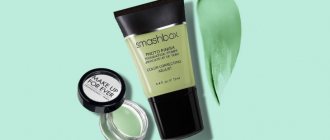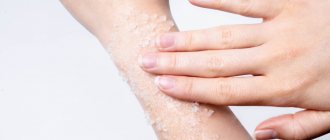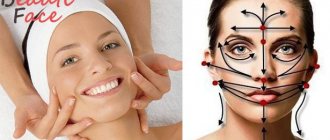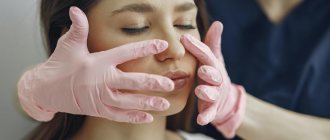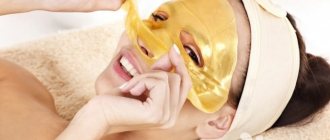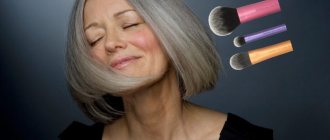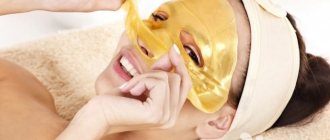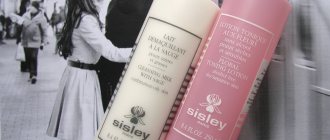The modern beauty industry offers girls many ways to achieve and maintain an ideal appearance. Decorative cosmetics allow you not only to emphasize your advantages (for example, highlight your lips with color or visually enlarge your eyelashes), but also to hide your flaws. By the way, the desire to cover up pimples or scars is often a factor due to which the fair half of humanity discovers the world of makeup. However, with practice many problems arise. Why do red spots still show through? How to prevent powder from rolling off? For what purpose are pink and green corrective agents used? This is just a small part of the questions that newbies have. In this material you will learn how to properly use face corrector step by step with a video and analysis of the colors of the palette.
What kind of remedy is this
You can guess the main purpose of corrective pigments based on their name. Its main goals are:
- masking acne, pimples and redness;
- tone alignment;
- visual elimination of irregularities;
- contouring features;
- hiding bags and circles under the eyes;
- eliminating traces of fatigue and lack of sleep.
It is worth noting that camouflage cosmetics only help to create the effect of getting rid of problems. It will not get rid of pimples, but will only hide them. Skin problems need to be treated by specialists, and corrective products make you feel more confident and beautiful. By the way, sometimes you can get a “medicinal” effect from them: some types dry out slightly, but this, of course, does not replace medical creams.
Features and Benefits
First, it’s worth understanding what a corrector is.
This is a cosmetic product that helps disguise minor facial skin imperfections, redness and hide everyone’s unloved dark circles in the eye area. This “magic tool” becomes a panacea when used correctly and helps to cope with many problems that other cosmetics cannot solve. Its advantages are: masking age spots, freckles, scars, bags under the eyes, grayness and pallor, wrinkles; Help in the fight against peeling, irritation, acne and blackheads.
But such an effect can only be achieved if the corrector is used correctly, and there are some features:
- Compliance with the measure. Many people think that the more they apply to their face, the better it will be. Actually this is not true. If you apply too much concealer, it can leave uneven spots and even harm your facial skin.
- Applying moisturizer. Before using a concealing “tool,” it is advisable to apply cream, since any cosmetic products usually dry out the skin and this can result in premature aging and the appearance of wrinkles.
- Hygiene of auxiliary instruments and aids. Here we are talking about the cleanliness of brushes, sponges and fingers with which the product is applied. After all, if you do not follow these simple rules, then unpleasant consequences in the form of irritation, redness and inflammation are possible.
- Best before date. These numbers are always important, because the components included in the corrector can cause harm to the skin if their expiration date expires.
- Proper storage of the product. All cosmetic products should be stored in a dark place, avoid high temperatures and direct sunlight, as this will make the cosmetic product unsuitable for further use.
Which manufacturer's products should I choose?
Among corrective products, 4 products are popular:
- Maybelline better skin concealer with Actyl C vitamin complex. The product allows you to improve the overall appearance of your skin after just 3 weeks. Covers the skin well, perfectly hides redness, pimples, circles under the eyes. The texture of the product is light, not greasy. It is important to apply and blend it quickly; the concealer dries out quickly. “Maybelline better skin” is a long-lasting product that, judging by user reviews, lasts well all day.
- The line of liquid corrector “Essence all about matt” contains only 2 highly pigmented shades. It is produced in 12 ml bottles. Perfectly mattifies, hides bruises, wrinkles and evens out skin unevenness. Consecutive application of several layers of the product is allowed. After application, the skin looks natural and well hydrated.
- The light texture and excellent coverage of the Nyx hd photogenic concealer series concealers make them excellent assistants in hiding any facial skin imperfections. Lavender color is used to neutralize yellowish blemishes, green is used to disguise redness, yellow is used to hide blue circles under the eyes. The composition contains reflective particles, making the product suitable for use in bright studio lighting conditions.
- The “Vivienne sabo radiant concealer” corrector contains natural chamomile extract, hyaluronic acid, vitamins C and E, coenzyme Q10, and beeswax. Thanks to these ingredients, it perfectly moisturizes the skin, relieves irritation and protects it from premature aging. There are only 2 colors in the line. Vivienne sabo radiant concealer has excellent coverage. It is important to apply it in a thin layer, otherwise the product will not hide skin defects well.
Types of concealers for the face
There is a misconception that concealer and corrector are two different types of decorative cosmetics, differing in coverage density. The myth arose due to the fact that creamy, dense concealers are often used by makeup artists to correct facial features. This is how the term “corrector” appeared in the context of makeup.
In the West, the word “corrector” is rarely found in the names of cosmetic products. Local concealers are called “concealer”. On the Russian market, colored concealers in a stick or palette are more often called correctors.
Concealers are available in the following formats:
- tuba;
- tube with applicator;
- refill palette;
- with a brush;
- pencil (stick);
Their main difference is texture. Oil-based correctors in a palette or stick form are thicker. They have a thick coating and can clump on oily skin. Liquid concealers with an applicator or brush have a light texture. They blend and set well, but have less concealing pigments.
Subtleties of choosing concealers
Like any other cosmetic product, correctors can cause irritation to the skin. A preliminary test for an allergic reaction will help reduce the risk of their occurrence. Brand palettes include different shades of the same pigment color. Fair-skinned girls should choose light-colored correctors; dark-skinned girls should choose more saturated colors from the palette.
There are many types of concealers, and the choice of product primarily depends on the purpose of use:
- The pencil has a dense structure and is suitable for correcting minor problems: freckles, minor redness and pimples. (NYX, AVON, Faberlic);
- Tube with a brush It has a liquid texture that perfectly combats many imperfections in appearance. It can be used spot-on and on large surfaces of the skin. (MaxFactor, Mizon Correct Concealer, NYX Concealer Magic Wand);
- The product with a paste-like consistency in tubes is a universal version of the product. The average density of the cosmetic product makes it convenient to use over large areas. Lightens pigmentation and dark spots, makes capillary meshwork, spider veins and rosacea less noticeable. Easily mixes with other color pigments to create new tonal variations. (Shiseido natural finish cream concealer, DERMABLEND (shade no. 25) from Vichy)
Don’t miss the most popular article in the section: Plasmolifting of the face - what it is, how it is carried out, results, photos before and after the procedure.
Common mistakes
There are times when the concealer seems to be chosen correctly, but it is not possible to disguise defects on the skin. At best, the result is a powdery effect, at worst - peeling plaster. It's all about technique and application rules.
If they are violated, it is difficult to achieve the desired result. But it happens that even fulfilling the requirements does not help hide the problem area. A selection of mistakes that women most often make when making makeup will help prevent disappointment.
If you take them into account, it will be much easier to make defects invisible:
- Concealer should not be applied to dry skin, as it will be impossible to blend it out.
- It is better to do shading with a brush. Its soft structure will not affect the cream base of the product.
- To achieve effective camouflage, concealer should be applied only after foundation. If you break the sequence, the result will not be satisfactory.
- A thick layer of masking composition will not give the desired effect. The initial, seemingly good result will become an unpleasant accent on the face after half an hour. Crackling and delamination will resemble old plaster falling off the wall of a house. If the structure of the cream has become denser over time, it can be diluted before using as a makeup base.
- The area around the eyes should initially be treated with day cream, and after drying it, a concealer should be used. This way, small wrinkles will be filled in, and after adjustment they will not pile into folds.
- It is recommended to correct the area around the eyes with a concealer that is a tone lighter than your skin color.
https://youtube.com/watch?v=77zu2f7GKmU
Advice from professionals
Most girls make typical mistakes when applying concealer to their face. As a result, instead of ideal-looking skin, they get spoiled makeup, on which the outlines of skin defects are clearly visible. To avoid this result, listen to the advice of specialists on the correct application of concealer:
- Don't try to use foundation instead of concealer. It is possible to cover up dark circles under the eyes with foundation, but in this case the shade should be lighter than the complexion. But many people forget about this, covering their entire face with the same shade. The big advantage of concealer over foundation is that the latter settles into small wrinkles around the eyes, making the skin look unnatural.
- Few representatives of the fair sex have the technique of spot-applying concealer. If you need to disguise a pimple, girls often make the mistake of squeezing the corrector on top of it and trying to blend it out. In this case, there will be no result even after several layers applied. To apply the corrector correctly, use a thin brush to apply the product around the pimple, gradually approaching the center.
- It is difficult to blend concealer on dry skin. Therefore, makeup artists recommend slightly moistening your face with plain water before applying concealer.
- Experts do not recommend shading the concealer with cold hands. First you need to warm them up. An important point: those with oily skin should not apply the concealer with their hands; they should use a special brush.
- When applying concealer, you do not need to use a magnifying mirror.
- If necessary, you can apply the massage product in several layers.
- Avoid using concealer to cover open wounds or abrasions, as this may cause inflammation.
Types of face correctors
Choose the appropriate proofreader format depending on the task you face.
Liquid corrector
The most popular format: liquid correctors are loved primarily because they are easy to use.
- As a rule, the kit includes a convenient applicator, like a lip gloss, with which it is easy to apply the corrector both to spots and to larger areas.
- Many of the liquid concealers can be used around the eyes to hide dark circles under the eyes. However, make sure that the corrector is not too dense in texture and does not get caught in small folds of the skin. If dark circles are too noticeable, apply the product in layers: first spread the corrector in a translucent layer and blend well. Allow the product to absorb and apply a second coat.
- Liquid correctors are produced in different colors, from pink to green: these are intended for color correction of the skin.
- Sometimes you can see the inscription “reflective corrector” on the packaging; they are used in the area around the eyes to hide small swellings, or used instead of a highlighter.
Corrector stick
The second most popular format of concealer, which is very convenient to take with you: it definitely won’t smear in your bag, and you can use it to disguise an inopportune pimple even in a taxi on the way to a party. This product has a creamy texture, so it spreads quickly and easily over the skin and is perfect for girls with dry skin.
To hide a pimple or a small scar, proceed according to the following scheme: precisely apply the product to the problem area, wait until it “settles” on the skin a little (20-30 seconds), and then blend the edges with your fingers or a sponge. Apply a little powder on top to seal the result.
Pencil corrector
The corrector pencil has a high density and dry texture; antibacterial components are often added to its composition, so this product is ideal for girls with oily and problem skin. In addition, this concealer has the highest staying power. In addition to its main function, such a pencil also takes on several others.
Using a corrector pencil, you can visually enlarge your lips: apply a nude pencil, slightly extending beyond their contour. If, on the contrary, you want to make your lips a little smaller, outline them strictly along the contour.
The pencil can be used instead of a primer for the eyes or lips: shade the entire surface of the lips with corrector, and apply bright lipstick on top - the shade will be more saturated and the lipstick will last longer. Do the same if you use bright shadows.
You can use a corrector pencil to highlight the area under the eyebrow to visually lift it.
Line the mucous membrane of your eyes with a pencil to make your eyes look more wide-open.
Makeup.ru
Cream corrector
Concealer has a creamy consistency and is usually sold in small jars or palettes of four to six colors: they are useful if you need to solve several different skin problems. In general, cream correctors are universal (they are even used to correct the shape of the face), they have a fairly dense consistency and high covering power, so they can be used to disguise scars and dark spots.
Cream correctors can be applied to different areas of the face with a brush, sponge or even your fingers. Best suited for normal to dry skin, may be too rich for oily skin.
Foundation corrector
On occasion, it can replace foundation, as it has a similar consistency. Choose a shade according to the same rules that you follow when choosing a foundation: it should perfectly match your skin tone.
Dry corrector
Not the most common concealer format, which, however, is ideal for oily skin, as it has a mattifying effect. Use to correct redness or age spots: in the first case, a corrector with green pigments, in the second, with purple pigments. Apply regular powder to match your skin tone on top.
If you can't decide on the type of corrector, take our test.
Review of the best concealer palettes
Not many brands offer multiple concealers in one palette. NYX Professional Makeup has an option that the editors think is worthy of attention.
Palette Conceal, Correct, Contour, NYX Professional Makeup
In addition to concealers, this palette, which includes six shades, also includes several correctors. Beige - for general camouflage of imperfections (such as acne, for example). Pink - to get rid of dark circles under the eyes
Additionally, Conceal, Correct, Contour includes shades for contouring, which can be used to emphasize cheekbones, as well as darken those areas of the face from which you need to divert attention. If you use all these products together, you will perform a full face correction and get a detailed, complete image
The most popular questions about concealer
If you've never used concealer, you're probably wondering one of these questions. We answer in detail.
Is concealer suitable for oily skin?
Concealer is a universal product that is suitable for any skin type. Another question is that concealers come in different textures, and owners of oily skin find some of them (for example, liquid ones) more suitable and comfortable. To feel even more comfortable, we recommend lightly powdering your concealer with regular or translucent powder.
Can concealer be used instead of foundation?
Concealer and foundation belong to the same category of decorative cosmetics (foundation), but they perform different functions. Concealer is used spot-on to hide individual imperfections, and foundation usually “captures” larger areas, evening out the tone and texture of the facial skin. Concealers have a denser texture, in addition, they should be chosen a couple of tones lighter than the skin, and the foundation should match it in color as much as possible. But there are hopeless situations: if you don’t have foundation on hand, the functions of the concealer expand. We do not recommend applying it all over your face (there is a risk of getting a mask effect), but you can visually smooth out enlarged pores with it.
Which concealer is considered the best?
There is no universal solution (as is the case with any other cosmetics). The best concealer is the one that suits you perfectly. And any concealer that claims to be the best should have a uniform texture, spread well and not get caught in small wrinkles and pores.
Facial concealer: how to use, step-by-step instructions
How to use concealer correctly? To do this, first prepare the necessary tools. Liquid and cream concealers can be applied with a sponge, and powder concealers with a brush.
You should not apply this product with your fingers, as you won’t get anything beautiful this way. It is especially not good to apply concealer with cold fingers. It is better to purchase a small beveled brush. With it you won’t get a lot of product, just the amount needed, and it will be convenient to shade it.
Next we will write how to use facial concealer; a step-by-step guide with photos will be useful for you.
Concealers for the face: how to use if there are very few imperfections on the skin?
If you do not need much concealer, how to use it will not be the same as for very noticeable defects on the skin. In this case, the product is applied after foundation, which is already able to hide some unevenness and redness.
So, how to use facial concealer, step by step guide:
Apply moisturizer to your face
This is important to mitigate it. It is better not to apply contouring and toning products to dry skin, as in this case it will be difficult to shade them and erase the boundaries of application.
Apply foundation to damp skin
Blend it well and wait until it dries a little.
After this, apply concealer where needed.
Apply a second thin layer of foundation.
Powder your face a little so that the boundaries of applying different products are completely blurred.
This is exactly how concealer should be applied, and how to use it step by step is clear. It is not difficult to repeat these steps.
How to cover up serious skin problems with concealer?
Sometimes you have to disguise quite serious things. For example, it is quite difficult to hide large acne. It is also not easy to make age spots and bruises invisible. In this case, the application scheme is slightly different.
- Apply cream to moisturize skin.
- Treat problem areas with concealer.
- Apply foundation in two balls.
- Powder the transitions.
This scheme for applying concealer is more effective for serious skin defects. The foundation cannot cover them even partially. Therefore, you should first correct them, and only after that apply foundation.
It is worth noting that facial concealers are applied gradually; how to use for acne on the face, see the photo. Use a brush. Don't spend a lot of money on it. Apply it to the pimple gradually in separate strokes from bottom to top. This way you will end up in the center of the pimple. This method of application really ensures that you hide imperfections in your skin. If you apply concealer in any way, you risk making the pimple even more noticeable.
How to use eye concealer?
Most often, concealer is applied to the areas under the eyes. Bruises may appear there. They need to be hidden properly. To do this, follow these tips:
- Apply concealer under your eyes in a triangle shape. It shouldn't be too small.
- Blend gently so that the edges blend into the overall tone of your face.
This application technique is necessary so that there is not too much product under the eyes and so that it can be shaded normally.
If you use facial concealer correctly, it will become a real helper in any situation. With its help you can make your face smooth and beautiful.
Watch the video on how to properly use facial concealer. It will help you on your path to beauty.
Types of corrector palettes
Basically, correctors come in two types.
Dry (powdery, compact)
Powder products for the visual correction of cheekbones are considered easy to use, although there are nuances. For example, professional brands have contouring powders that are more pigmented: a professional makeup artist can easily handle them, while a beginner risks leaving a stain on the face.
Correctors are produced in two formats: compact and cream
Cream
Most color correcting products have a creamy texture - they are easier to apply and easy to blend even with your fingers. Products for light and shadow modeling of the face are also popular now: these can be either palettes or single products. Modern cream correctors are perfect even for beginners.
Remember: the greasier the product, the easier it is to blend, but the worse it will stick to the skin.
How to paint your face with correctors: we understand the varieties
Cosmetics manufacturers market concealing products in a variety of forms. Among them, both a professional makeup artist and a simple amateur will be able to find the most suitable version. They all differ in structure, configuration and mechanics of use.
In the form of lip gloss
Inside such a jar most often there is a liquid cosmetic product, which is applied using a special brush. This type is very convenient for camouflaging large areas of skin. You can apply it to the area under the eyes, cover up redness on the forehead or chin. Sometimes it has too dense a texture, and therefore often gets clogged into pores and rolls off. To avoid this problem, it is worth applying the product in a thinner layer. In this form, highlighters and concealer cosmetics are produced in different colors.
Stick
In texture, it resembles something between lipstick and butter (hard cream) for business. Most often, the stick is used to spot mask imperfections. Did a pimple pop up suddenly? No problem! A corrective will help solve this problem. In addition, such a corrector is very convenient to carry with you. It is compact and quite dense, which means it won’t spill all over the bag. Sometimes antiseptic substances are added to its composition. They dry out the pimple a little and promote its speedy healing.
Pencil
The correction rod does an excellent job of masking very minor imperfections. With its help, you can remove or draw on (if the image requires it) freckles and moles, hide blackheads and small pimples. The pencil is also often used to draw the contour of the lips: this allows you to make them larger. With a white tint you can visually enlarge your eyes. To do this, you need to draw the growth line of the lower eyelashes. Face correction using pencil-shaped correctors gives a very lasting result.
Palette
This is the most common type of corrective substance. Makeup artists and hobbyists buy it for its convenience, versatility and benefits. The texture of cosmetics in such sets can be creamy or dry. Under one lid in different cells there can be from two to twelve (and sometimes more) different masking agents. The kit usually includes highlighter, contouring and enhancement products. Among the color palette you can see shades of brown, flesh, green and pink.
Separate jar
Applying concealer to your face can be a real art! In this case, the creators are professional makeup artists. They often choose powder concealer products to work with. They contain no unnecessary binders, which gives purity of color and texture. They are applied with a brush. The dry structure allows you to independently control the saturation and density of makeup application. You need to be extremely careful: there is a high chance of overdoing it.
How to hide wrinkles
Age leaves its mark on the face, but this is not a reason to stop taking care of yourself. With the help of simple techniques you can turn all disadvantages into advantages.
- Choose a very light foundation. You can also use an emulsion or filler.
- A yellow or beige tint will help hide facial wrinkles. Apply a little makeup and then set it with powder.
- You can get rid of wrinkles in the nasolabial folds using a light pink pencil. They can also be used to accentuate the arch of the eyebrow and the inner corner of the eye.
- It is better to apply cream or gel shadows with shimmer on your eyelids. Instead, you can use any light product from the corrective set.
Choosing colors and shades: how to paint with a palette of correctors
Due to the fact that correctors are intended to hide any skin problems, as well as sculpting, they can come in a wide variety of, and sometimes even unexpected, shades. Each of them serves for color correction and it is worth figuring out how to apply a palette of correctors to your face so that it looks fresher, younger and cleaner at any moment in your life. It also doesn’t hurt to understand the color wheel, which clearly demonstrates which shades can be leveled out by others, that is, visually overlap and disguise them.
Green or mint corrector
This is the most common shade of concealer due to its popularity. This is what teenagers and young adults who suffer from youthful dermal problems most often need. It is simply and effortlessly applied to the skin and blends well in areas of redness, irritation, scratches and other red-colored areas.
Often, a mint-colored cosmetic corrector includes an extract from a variety of medicinal herbs, for example, tea tree leaves and salicylic acid, not to mention vitamins and minerals. Therefore, the green corrector not only masks the problem, but also solves it by drying out and treating pimples and redness.
Blue and lilac shades
It would seem that the cool blue range, which is also presented on the corrector palette, can help. But there is definitely some sense in it, since if, for example, the circles under the eyes are excessively dark and even black, then it is advisable to first lighten them with blue, and only then mask them with other shades. Moles, age spots, freckles and anything else that is more similar to a brown tone can also be perfectly disguised with the help of such a corrector.
The lilac color perfectly hides bags and circles around the eyes, since this particular shade is as close as possible to the natural skin tone in this area. A slightly violet tint also doesn’t hurt when you want to “paint over” irritation on very light or even anemic skin.
Yellow and orange against dullness and boredom
It is not without reason that these tones are considered joyful and sunny, since even a sallow complexion can be made to shine with new colors, make it look healthier, refresh and rejuvenate. It is the yellow corrector that will quickly and easily help get rid of vascular capillaries, age spots and even bruises, bruises and abrasions.
Professional makeup artists recommend using orange to paint over dark circles under the eyes when they have a really bluish tint. At first, such a remedy seems too drastic, but once you try, everything falls into place. It’s great that yellowish and orange shades are used as a basis for shadows; they will add brightness, richness and freshness.
Pink and nude colors
In order to maximally revitalize, rejuvenate and refresh your dermis, use pink shade correctors that can easily cope with this task. A special place among cosmetic products is occupied by pink corrector for those ladies whose skin has faded and turned gray, and this can be due to illness, constant stress at work and at home, insufficient or unbalanced nutrition, a sedentary lifestyle, bad habits and other factors.
The pink corrector will make even oily skin look fresher and younger, giving it a healthy glow and beauty. Beige and flesh shades also have a place and with their help you can perform sculpting, that is, model the shape of the face that you like best. Using darker and lighter tones, you can elongate the oval, make the forehead larger or smaller, adjust the shape of the nose and raise the cheekbones, visually enlarge the lips and even the eyes. It is in order to learn how to use the corrector-palette for the face step by step that it is worth reading the continuation of our article.
Shades
Many girls who are just beginning to learn the basics of camouflage make-up are primarily interested in how to properly apply the palette and use color correctors for the face. The bewilderment is quite justified: in a palette you can often find almost the entire “rainbow” of colors! In fact, each of them is designed to correct different areas. All of them are used in different situations and somehow magically cope with their mission.
Green
It perfectly eliminates red color. It should be used if you have the following skin problems:
- acne;
- strongly protruding vessels;
- burns;
- redness.
Pink
This color works well in dark places:
- circles and bruises under the eyes;
- dark spots;
- hematomas;
- inflammation near the wings of the nose.
Purple or lilac
The shade is able to neutralize yellowness. It should be used to eliminate the following shortcomings:
- yellow spots;
- bruises;
- too dull skin;
- sunburn.
It is worth noting that this color is not suitable for dark-skinned girls.
Yellow
This is a real must-have for eliminating excess blue stains! You can use it to disguise:
- signs of lack of sleep;
- translucent wreaths;
- pimples and small hematomas.
To ensure that it “lays” well and does not get caught in small folds and pores, it is better to mix it with powder.
Shimmering White
The scheme for applying correctors to the face often involves placing accents. This is most conveniently done using a highlighter. It allows:
- visually enlarge the eyes;
- give the skin a fresh, healthy glow;
- visually correct the shape of the skull.
The main thing in this matter is to stop in time. It's easy to go overboard when working with shiny particles.
Brown
This color comes in several shades in palettes. All of them are great for contouring. With their help you can:
- draw cheekbones;
- darken the upper part of the forehead;
- correct the shape of the nose.
When sculpting, it is important to shade the cosmetic well. This will help create a natural shadow effect.
Light beige
It looks more like a concealer. It's great for covering up dark circles, blemishes and redness.
What types of facial correctors are there: types and descriptions
Makeup corrector comes not only in different colors, but also in different shapes. You need to choose a product depending on what tasks are expected to be assigned to it, as well as on your skin type.
There are 5 main types of face concealer used in makeup:
- Liquid;
- In the form of a stick;
- Pencil;
- Cream;
- Tonal;
- Dry (crumbly).
Liquid for quick concealment
Liquid face corrector comes in a small tube with a brush, like a lip gloss. It is usually beige in color. Suitable for dry and normal skin. Can be used when applying age makeup, daytime, evening. Masks pigment spots, dark circles under the eyes, acne. Not suitable for correction of eyebrows and lips.
Acne corrector stick
The corrector stick is convenient to use if necessary to disguise a pimple or age spots. It is also used to correct the shape of the face. For example, they darken the wings of the nose to visually make it narrower. The stick is also suitable for highlighting cheekbones.
Pencil
Corrector pencil is usually chosen in a beige shade to match the skin color or white. The first is used for eyebrow makeup. With its help you can select and correct their shape.
A white corrector pencil is applied to the inner corner of the eyes, under the eyebrow, and highlighted on the lips. It is often used instead of highlighter.
Creamy corrector - for perfect makeup
If you are planning evening, wedding makeup or for a photo shoot, it is important to apply professional makeup to your face. In this case, you won’t be able to get by with just a beige color corrector, since you need to mask all problem areas
For this purpose, green, red, and blue correctors are used.
Cream correctors usually come in a palette of 6 or more shades. This is the most convenient form, as you can prepare the skin for applying any type of makeup, hiding all imperfections.
Tonal or “2 in 1”
The foundation corrector is a “2 in 1” product and combines the properties of foundation and corrector. The shade is selected to match the skin color. Apply to face with a makeup brush or sponge. Release form: tube or bottle with dispenser.
Loose corrector - for oily skin
Dry or crumbly concealer is not the most popular type of this product, however, if your skin is oily in the summer, you should pay attention to it. It will help remove oily shine and correct imperfections such as redness, acne scars, age spots
Textures
One of the most important steps to understanding how to apply facial concealers is the composition of the cosmetics. Having a good understanding of this topic, you will be able to choose the right product for your skin type, and then your makeup will lie smoothly and harmoniously.
Liquid
The form of this product is similar to a light fluid or foundation. It is ideal for dry and normal epidermis types. It can often provide additional hydration. Due to its texture, it blends out perfectly. It is best to use a sponge or a thick brush with it.
Creamy
In operation, it can be compared to a body butter or cream shadows. It adheres very well to the skin, but is quite difficult to blend. Girls with increased secretion of subcutaneous fat are better off avoiding cosmetics with this structure: it can impart an inappropriate oily sheen.
Dry
To produce this product, pure pigment is pressed with mineral binders. The result is something like powder. It is best used by girls with dry and normal type of epidermis. The crumbly product lays down in a light layer and looks quite natural.
Chromatic circle in makeup: secrets of color selection
Color correction is based on the principle of color neutralization, and without understanding it, using a palette of face correctors correctly will not be easy. In the chromatic circle, all colors of the visible spectrum have an opposing color opposite them. For example, opposite blue is orange, and opposite red is green. When these shades are superimposed on each other, they are neutralized, and in order to disguise a defect, you just need to determine its color.
The standard corrector palette includes the following shades:
- green;
- lilac;
- blue;
- yellow;
- orange;
- pink;
- peach;
- white;
- beige;
- brown.
If the set is large, then it contains several shades of each color of varying saturation. The rule that works here is that the more intensely colored the defect, the richer the shade needed to camouflage it. Depending on the nature of the problem, different color combinations will be useful to you.
Green
The most popular among owners of oily and combination skin, as it fights the main manifestations of inflammatory reactions. Its use is justified in the following cases:
- red inflammatory spots;
- redness around pustules (pimples);
- burst blood vessels;
- insect bites;
- fresh scratches.
Dark-skinned and snow-white
Keep in mind that the darker the natural shade of your skin, the richer the color of the corrector you will need. Pale green will help disguise redness on fair skin, while dark-skinned girls are better off using an olive or mustard tone. Do not ignore this rule, since using a palette of correctors for the face without taking into account skin color is unacceptable.
Yellow
This color is useful for neutralizing the blue-violet tones, the manifestations of which often affect girls with thin skin and superficially located blood vessels. Feel free to apply yellow concealer to the following areas:
- blue and purple circles under the eyes;
- translucent venous network;
- rosacea;
- fresh hematomas.
Keep in mind that applying a yellow tone to undamaged areas is unacceptable, as it will give the face an unhealthy yellowness. When applying the corrector, do not slightly reach the edge of the defect, because during shading the yellowness will spread slightly to the sides and cover the entire problem area. This is a universal norm that works for all colors, and without following it, it will not be possible to correctly apply a palette of correctors to your face.
Lilac
Looking at the chromatic circle, it is not difficult to guess that the lilac-lilac-violet range is intended to hide the shortcomings of yellow-orange and brown shades. Feel free to apply lilac to the following imperfections:
- age spots, melasma;
- freckles;
- uneven tan;
- old icteric hematomas.
This corrector is most in demand among women of the older age group who are faced with the problem of photoaging. The pigmentation accompanying it forces the use of a palette of correctors for the face in lilac shades.
Makeup gadgets
The Beauty Blender is the perfect sponge for applying and blending cosmetics. Its pointed edge will reach the most difficult areas in the corners of the eyes and near the nose, while the opposite wide part will quickly cope with large areas. Don't forget to wet it before use so that your makeup comes out subtle and weightless.
Pink
Not the most used color, since its opponent is shades of green, which are an infrequent guest on the face. The pink corrector is used locally only at the appropriate stage of hematoma involution. But it finds diffuse application more often.
Girls whose whole face has a pale, greenish or earthy tint should not apply the corrector over the entire surface, because this may give too dense coverage without the possibility of blending. In this case, a little life hack will come to the rescue: mix a little of your usual foundation or makeup base with a pink liquid corrector. The resulting mixture can be used to cover the entire face.
White and beige
These colors are universal and are often used by beginners to camouflage all types of skin imperfections. But classic makeup with a palette of face correctors implies their use only for highlighting and darkening individual areas of the face using the contouring or sculpting technique.
Secrets of makeup artists
Using the tricks of professionals, you can significantly transform your appearance.
To ensure that the concealer is invisible in the area under the eyes, it should be applied in the shape of an inverted triangle with a special brush or fingers, while carefully blending. The corrector can be used instead of an eyeshadow base
A color slightly lighter than the skin is selected and applied in a thin layer to the eyelid; you can even apply it to the sub-brow area, adjusting the shape of the eyebrows. By drawing a line close to the lips with the corrector, you can visually enlarge them, and also preserve the pigment of the lipstick or the shine of the gloss for a long time. When it comes to evening makeup, then you should pay special attention to yellow concealer; it will give the skin a slight glow and an even tone. If suddenly the layer of product turns out to be too thick, then just gently blot off the excess with a dry cloth. Concealer helps to correct the shape of the eyebrows; to do this, you need to choose a product that is a tone lighter than your skin and carefully apply it above and below the eyebrow arch, and then carefully shade it. To contour your face, you need to choose a concealer that is two shades lighter and two shades darker, then, preferably in a room with natural light, you need to apply a light concealer to areas that catch natural light and a dark concealer to areas where there are light shadows. Many girls, when designing arrows before their eyes, have to deal with the problem of curved lines, often this ends with complete removal of the arrows and repeating the art again, but this can be avoided with the help of a proofreader; if they notice an error, it is masked, as if an eraser is erasing a simple pencil from paper. If there are unsightly pimples on the chest and décolleté, you can hide them. A concealer that matches the skin tone is applied, and translucent powder is applied on top, and so on in several layers until the imperfections are hidden from view. By choosing concealers with vitamin E, you can help dry skin become hydrated and healthy.
What else can you use concealer for?
Facial concealer: what it is, and what options for use there are, besides the classic one, every girl who takes care of her appearance should know.
The main functions of concealer are already clear, but there are many more uses for it:
- Base for eye shadow or lipstick. If you don't have a primer, then a concealer will do just fine. It will correct the skin tone of the lips and eyelids and lipstick or eye shadow will look brighter and last longer than usual.
- Error correction. Concealer will correct incorrectly drawn arrows, lipstick going beyond the lip contour, or applying it too brightly.
- Sculpting. If you buy a concealer that is the wrong shade, you don’t need to throw it away. A shade that is too dark can be used to correct the shape of the face, and a shade that is too light can highlight the desired areas.
- Filling the “gaps” in the eyebrows. After applying the product to the eyebrows, you need to let it dry, and then use your usual eyebrow product.
- Creating plump lips. The product is applied to the center of the lips and pressed in with your fingers. After this, a transparent gloss is applied to the lips.
